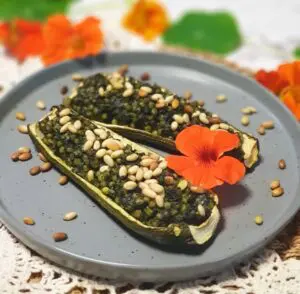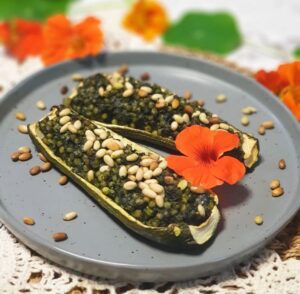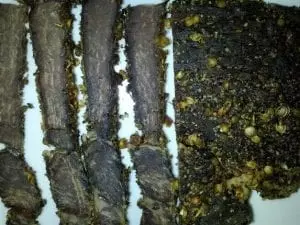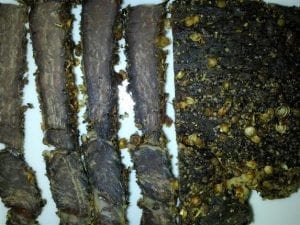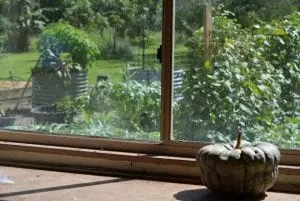Do you know how expensive passionfruit can be? It’s outrageous to pay for something that you can grow so easily at home! We love passionfruit, and it was the first major food crop we grew here at the Self Sufficient Me home garden. Using my top tips on how to grow a ton of passionfruit, you can grow it too.
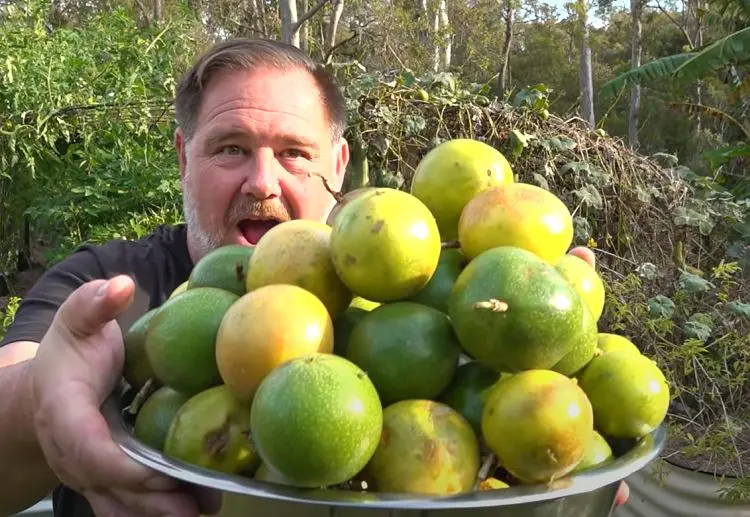
Climate
Passionfruit vines are typically a subtropical or tropical plant, and originate in South America. They are frost and drought sensitive with an ideal temperature range of 20-28C (68-82F). In these climates (US zones 10-12), passionfruit will thrive, and can be grown in either sun or shade. The thick-skinned Panama varieties are recommended for tropical and equatorial regions, as they will better withstand the humidity and pest pressure in those areas.
You can grow passionfruit in temperate regions too, provided it has a warm, frost-free position. Purple varieties such the nellie kelly are recommended for this cooler climate as they are specifically bred for it. Even through my subtropical winter, I’ve noticed that purple varieties grow better than the yellow ones, which tend to die off as the temperatures drop. Cool to cold climates (about zone 9 and below) will struggle to grow passionfruit outdoors. A hothouse or greenhouse would be required in any regions that experience frost.
True to Type
I recommend that you select a passionfruit variety that is true-to-type. This means, collect the seed from a passionfruit that will grow back exactly the same as the parent plant and produce fruit of the same quality.
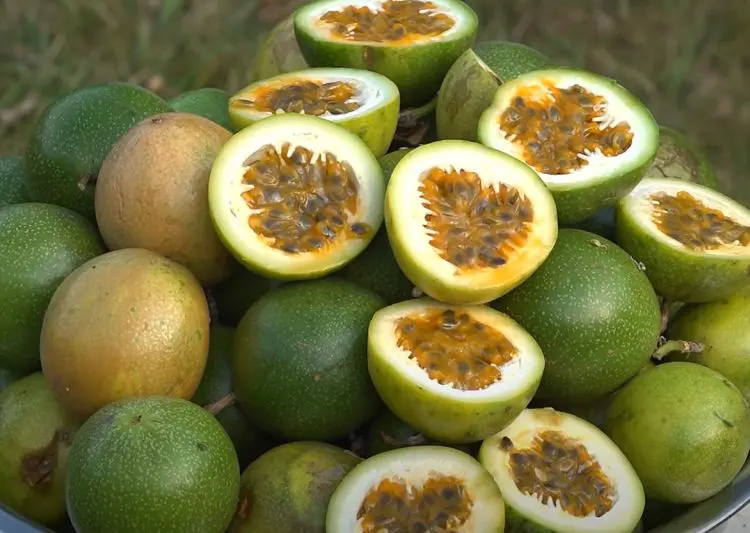
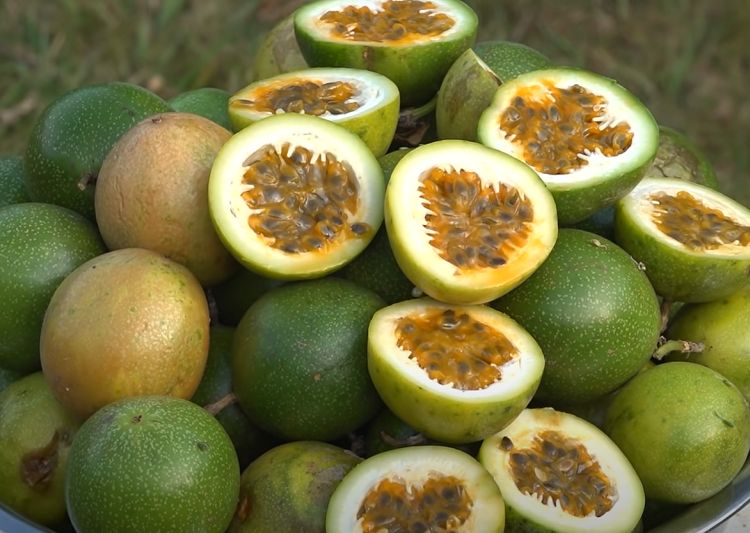
Some varieties sold by nurseries are hybridised to improve taste, or grafted on to a hardy rootstock to give them better disease resistance. Personally, I prefer to find a variety that already has these qualities and grow it from seed. I then grow its progeny over and over in my own garden. This not only gives me excellent fruit every season but improves the plant strength and resilience too.
To sow passionfruit seed, simply place the seeds into a pot and cover lightly with potting mix. Keep moist (use a simple sprayer) and keep in the shade. After a few weeks they’ll germinate, and will be ready for pricking out into individual pots. Let them grow into small plants, then set them a few feet apart when planting out.
Whether you should use fresh or dried seed is a debateable issue when it comes to passionfruit. While using fresh passionfruit seed is said to be best, it is also true that that fresh seed is coated with a jelly-like substance that may inhibit germination. In reality, this may simply mean that germination from fresh seed takes a bit longer than expected. Ultimately, both fresh and dried seed should germinate, so I suggest using what is readily available to you.

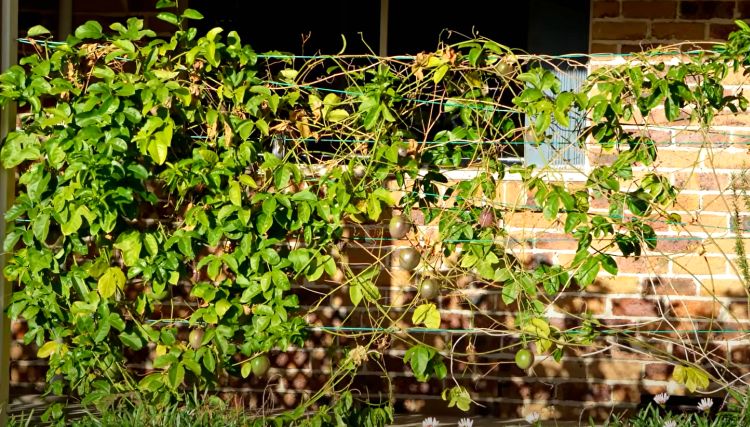
Passionfruit vines are fast growers and will usually start producing fruit in 18 months-2 years. Here in the subtropics, its ideal climate, my vine fruited at just 16 months old. However, passionfruit can take up to 3 years to fruit if the soil or climate are less than ideal. Most passionfruit vines live for around 7 years. I generally grow mine for around 3-4 years, because I find that productivity declines at that point. Additionally, diseases like woodiness virus can develop, so I recommend renewal rather than persisting with old plants.
Passionfruit will grow well in the shade, and are one of the few fruiting crops that do. It also grows well in full sun, and this versatility makes it one of my favourite food plants to grow.
Strong Trellis
A strong and substantial support structure is essential for passionfruit, as it will become a big and heavy plant. This is especially true if you’re growing several vines together on the one trellis. My trellis has a couple of posts that are fully cemented in, plus several star pickets between those. Attached to that is some strong concrete reinforcing mesh (reo), that I use as a trellising material. I find this gives it plenty of room & allows it to sprawl out.
While its perfectly fine to grow passionfruit in a general garden, and it will happily climb trees and make space for itself, I think its better to give it a designated position. This way it won’t smother out other plants or take over valuable veggie garden space. As well as that, it’s impossible to control & harvest from a vine that has grown high up into trees.

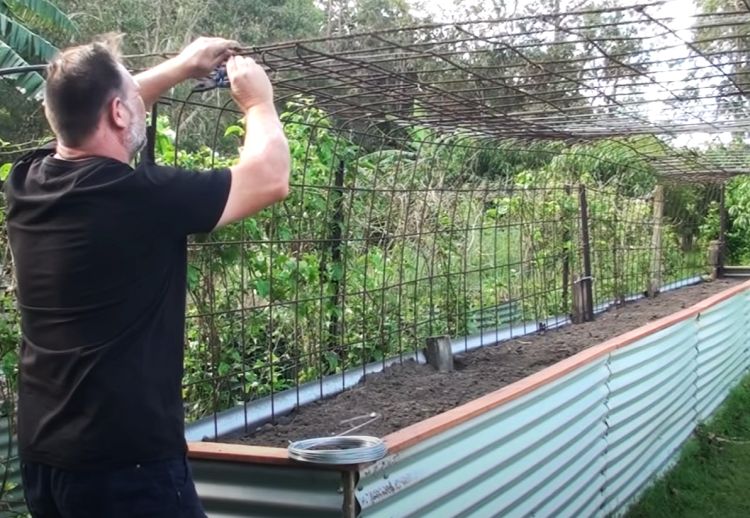
Harvesting
Luckily for the home gardener, not all the fruit on a passionfruit vine will ripen at the same time. This is handy because there is rarely a glut; if you do end up with too many you can freeze the pulp for later use. In my subtropical climate, passionfruit vines fruit in winter and early spring, though fruit may appear later in colder areas.
Signs of passionfruit ripeness may vary a little between varieties. Usually a passionfruit is ready to harvest when it has fully changed colour and has a slight give when you press on the fruit (this is true of Panama red). Others, such as the thinner-skinned Nellie Kelly type, may look shrivelled and fall off the vine to indicate readiness.

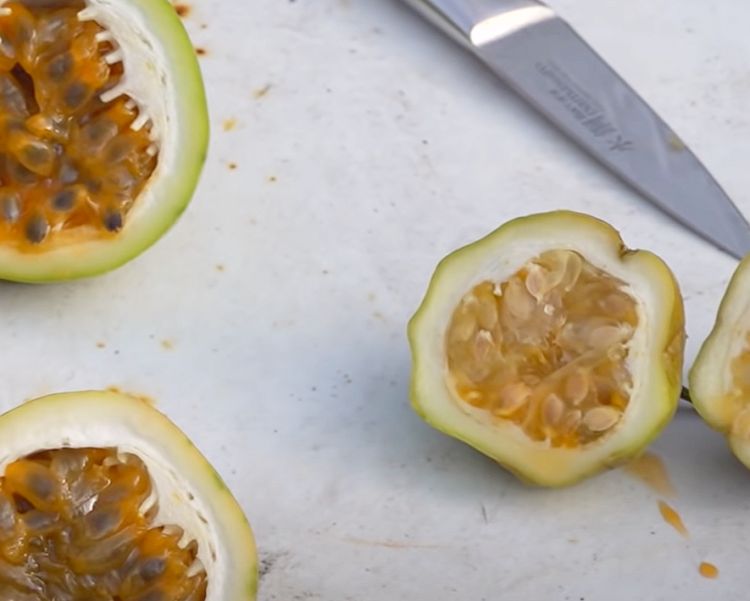
For those in SEQld, note that passionfruit won’t ripen fully or as well as usual, in cooler weather. They may be somewhat green & a bit sour, but generally the pulp is still developed and perfectly good to eat. You will be able to ripen them further & sweeten them up by leaving them out on the kitchen bench for a few days. They may not change colour completely (i.e. to purple or yellow), but are definitely edible, albeit a bit less sweet.
If a passionfruit has shrivelled without changing to its ripe colour at all, it won’t be edible. In this case the pulp has usually not developed properly or has dried up. This may be due to inadequate water or other unsuitable conditions.
Pruning
Essentially, passionfruit is a forgiving plant that can be pruned as required. It won’t hurt the vine, and pruning will encourage new growth. Passionfruit generally dies back in the colder months, so this is the best time to prune. In my subtropical climate, I prune them right back to stems after all the fruit has ripened, which is at end of winter. I then re-use the prunings by chipping them and using the resultant mulch elsewhere around the garden.

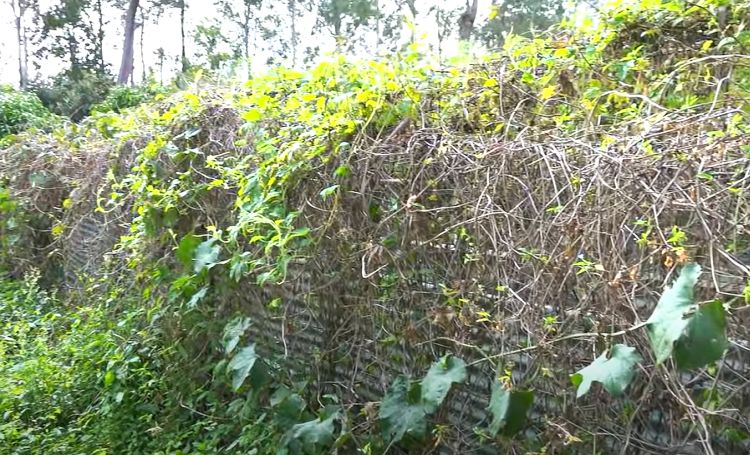
In some tropical climates this die-back might not happen, and if so, it’s not a bad idea to cut them back at the end of winter anyway so as to stimulate new growth and prevent diseases. You’ll then find that in spring it’ll start growing back with a vengeance.
Fertilising
Folklore tells us that in the old days, every passionfruit vine had a sheeps liver or ox heart added to the planting hole because they loved the extra iron during the early growth stage. This marries up with popular advice that passionfruit are a hungry plant that loves regular applications of fertiliser.
I must admit that I’ve never done either of the above because I find they grow well without regular fertiliser. This is likely because I grow them in good quality soil which provides continual nutrition.
If you do need to fertilise passionfruit, do so at the start of the growing season which for this plant is spring. Scatter either pelleted chicken manure, well-rotted manure or a bit of commercial blood & bone (bonemeal) around the base of the plants. This is all you should need to do for the season if your soil is good. If your soil is nutrient-poor, adding some extra compost and/or fertiliser throughout the growing season is a good idea.
Be mindful of over-doing the fertiliser. Over-fertilising *is* a thing, and it’ll result in fantastic leaf growth and less fruit.
For a video of this article, visit our youtube channel by clicking the link below!

